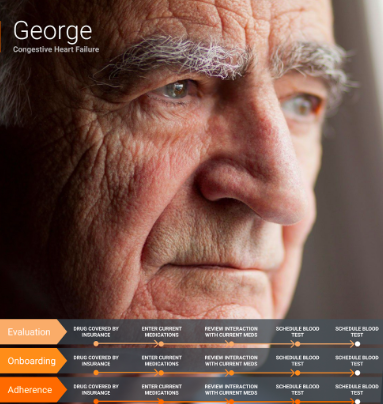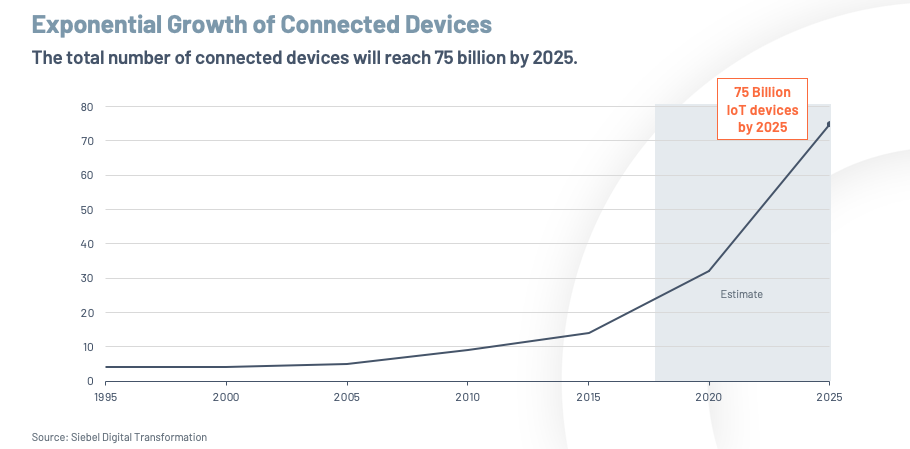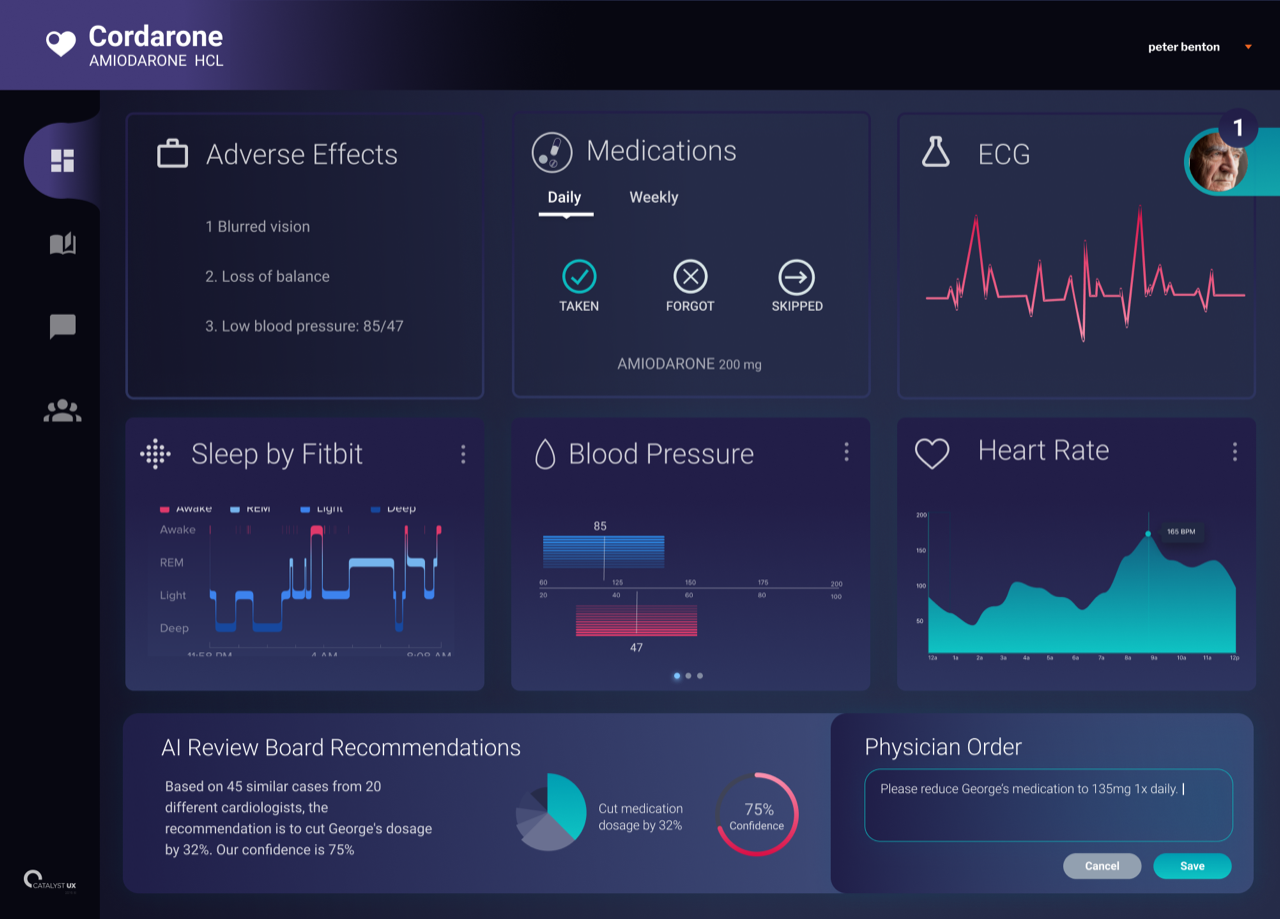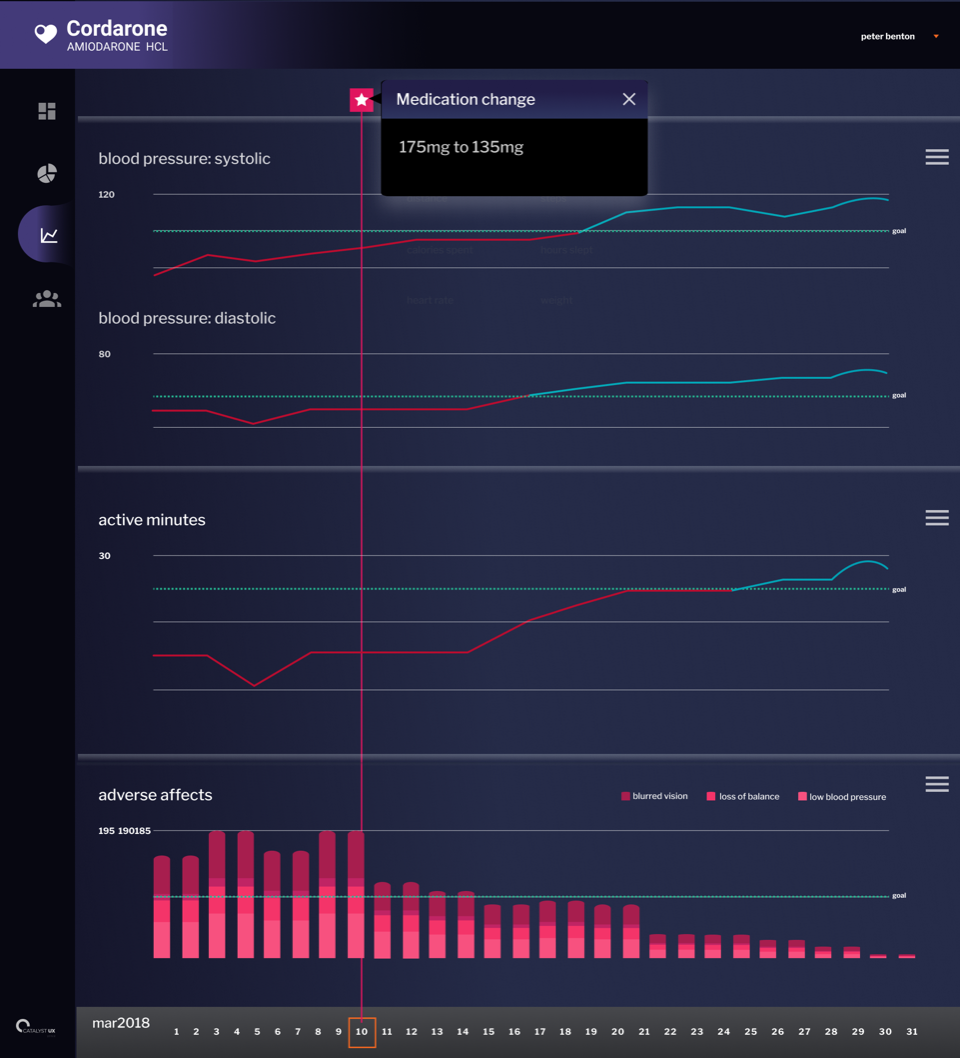Growth of Digital Transformation in IoT-Connected Devices and Artificial Intelligence
There are four key enabling technologies that are helping power the growth of digital transformation. These technologies include: IoT devices, artificial intelligence, big data and elastic cloud computing. At Catalyst UX, we have seen substantial growth of digital transformation in IoT-connected devices and AI-related skills. This is largely because the sheer number of IoT-connected devices is on the rise. By 2025, there will be an estimated 75 billion IoT devices. And along with this, is the anticipated need for AI-related skills which, by 2018, is expected to be five times what is was in 2013 (according to Indeed.com).
Digital Transformation in Healthcare
Because of this, more and more industries are investing in digital transformation. Not least of which is healthcare. In fact, IoT spending in healthcare is expected to increase from ~$5.6 billion in 2015 to nearly $17 billion in 2020. Outside of the financial investment, the potential impact to the provider and to patient care will be very significant and meaningful.
Growth of Patient Engagement
And while digital transformation is on the rise in healthcare, so is patient engagement. At Catalyst UX, we are seeing a continuing shift from a transactional view of healthcare to an outcomes-based view.
This shift is driving a need for robust Patient Engagement Solutions (PES), programs and systems to encourage patients to participate in their own care. In fact, the U.S. market for Patient Engagement Solutions is growing at an estimated 20% compound annual growth rate (CAGR), and is expected to reach over $48 billion by 2025. In part, this growth is due to the fact that Patient Engagement Solutions address multiple challenges in the healthcare ecosystem; challenges related to drugs, medical devices and therapy.
An Example of Digital Transformation in Action

But how do you blend digital solutions with patient care to move these metrics. Well, we have an example to share. Take a patient who is experiencing congestive heart failure. Let’s call this patient George. George is being prescribed medication. And, as with any medication, there are steps one needs to take, from the initial evaluation, to starting the drug, and ultimately adhering to the treatment plan.
By introducing an IoT-connected device that helps measure drug adherence — and other factors such as side effects, blood pressure and sleep — the patient can have more meaningful conversations with his physician and caregivers, and hopefully a better outcome.
At the same time, the pharmaceutical companies have the possibility of accessing aggregated data that will give them insights that could help:
- Improve prescription conversion.
- Decrease days to first dose/treatment.
- Increase average days of adherence.
A Day in the Life
The Patient Application
.png)
And let’s say this device is connected with a smart watch that also tracks sleep, activity and heart rate.
Now instead of the patient meeting only once every several months with a doctor and only relaying information he or she recalls, the physician or healthcare navigator would have access to relevant, meaningful data and events that can inform the appropriate diagnosis and treatment.
Take that one step further and imagine that recommendations can be validated by an Artificial Intelligence Review Board against similar cases. Ultimately the call would be the doctor’s, but he or she would have insightful, valuable data at their fingertips and regular updates to make the right recommendations.
What the Physician or Health Navigator Might See
The below screenshot is an example of the information that could be accessed by a physician and a high-touch health navigator, or a member of the healthcare team that helps individuals overcome barriers to quality care. This includes critical data that is modeled around the ideal in-office experience. For example, this information would include the patient heart rate and blood pressure, along with medication adherence and even sleep. We strongly feel that the presence of a health navigator that can be more available to the patient and has access to the physician is critical.
During the course of treatment, information is gathered. And then, based on a certain population for this drug, there are predictive-based AI analytics that can provide the physician with recommendations to consider. The physician ultimately makes the decision on orders to be issued to the patient.
The Physician and Care
When orders are issued (in this case to reduce medication to address side effects), the physician and the health navigator can review the patient’s relevant data (blood pressure and side effects) longitudinally over a relevant time period.
Data Insight Possibilities
For the medical device manufacturer or pharmaceutical company, digital transformation solutions can provide data that were never available before across their entire patient population. This data may very well be pseudonymised. Insightful, actionable data can be available at all stages of the solution life cycle, including conversion of prescriptions, onboarding and adherence.
The Impact Could Far Outweigh the Investment
Imagine a billion-dollar drug brand. Increases in prescriptions filled, reductions to days to first dose and days of adherence can have a very significant impact on the financials of that brand, as shown below.
Take the Next Step
Catalyst UX is one of the leading firms for designing and building medical digital solutions. We work with global leaders and emerging innovators. Want to see other examples of digital transformation at work in healthcare or talk through where you might start? We are happy to set up a 30-minute discussion with a member of our leadership team. Contact us below.






